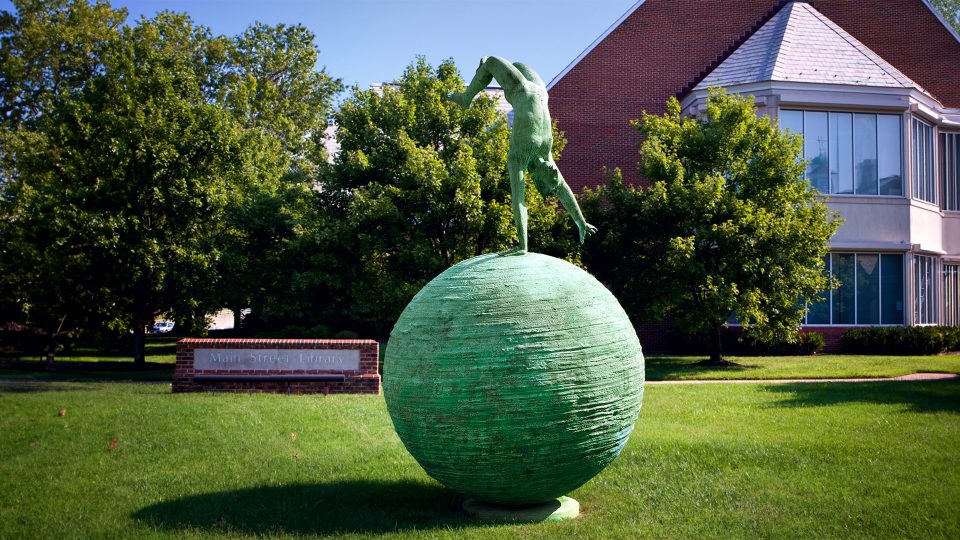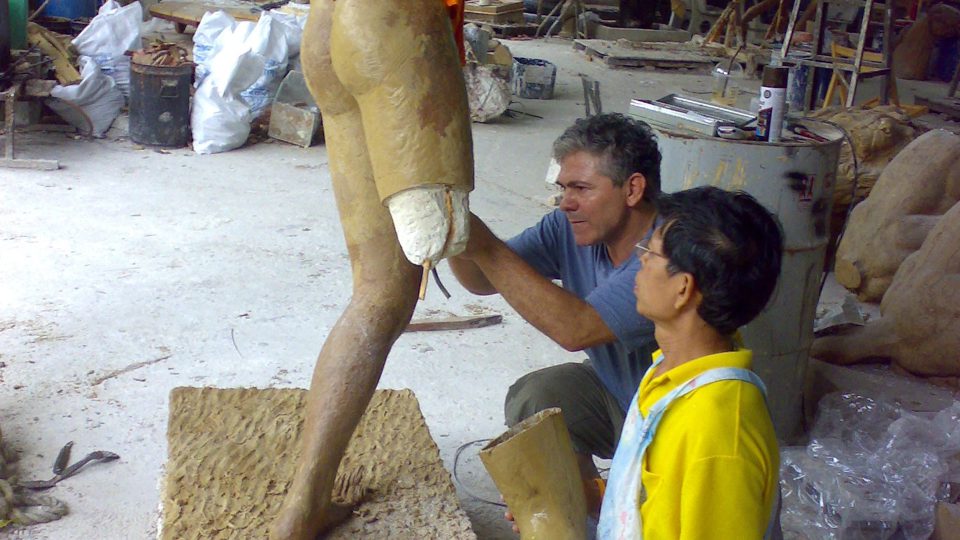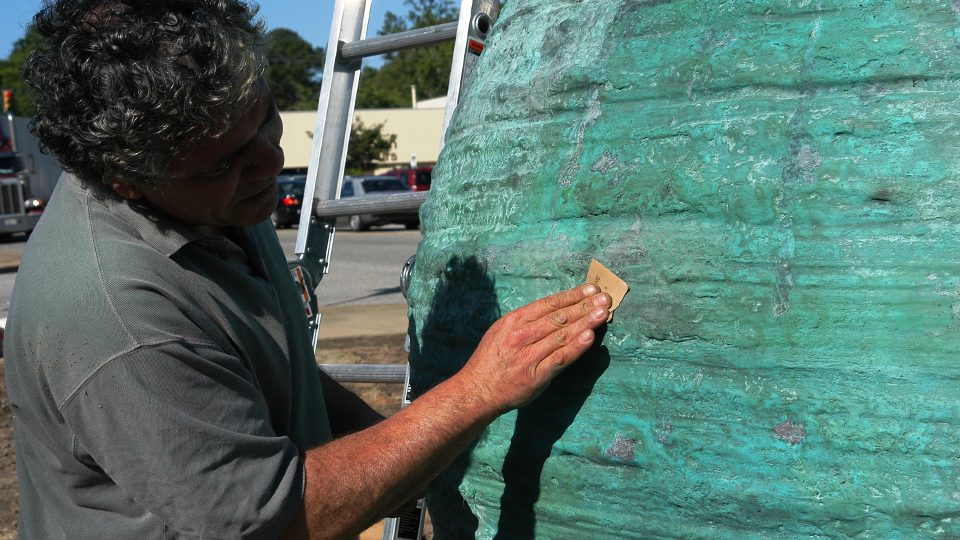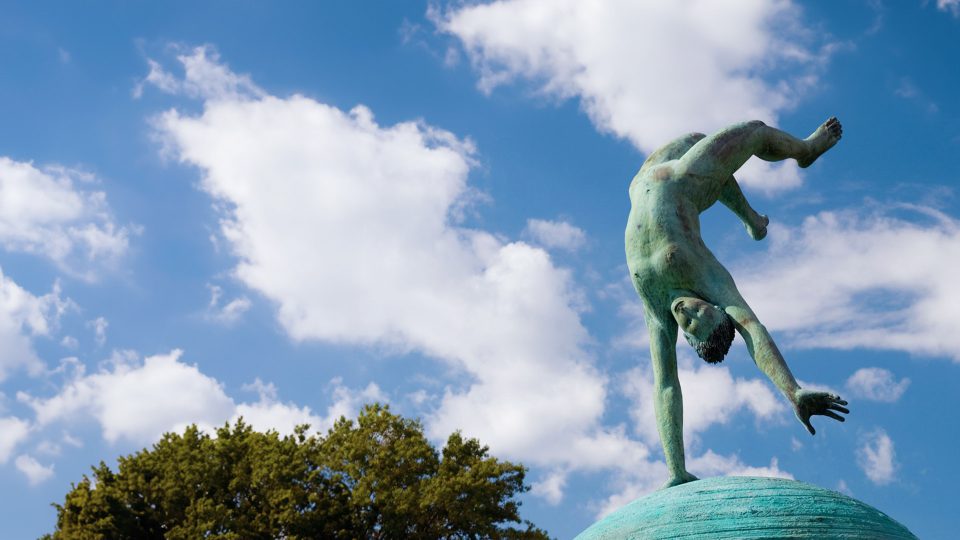CARAMBOLA
EMANUELE DE REGGI
“Carambola” is an Italian billiards-like game in which balls have to “jump” each other. De Reggi uses it to say something, but about something much more serious than play.
What Carambola is about, De Reggi, explains, is balance. The figure is poised on the sphere, which can represent the globe, the Earth and, by extension, life. Is the figure vaulting? Leaping? In some way he seems to be, like De Reggi himself and many of his works, in motion. And that’s the point, because what does a sphere do but roll, this way or that, its direction unpredictable but its movement inevitable? The figure has to be ready for that motion, ready to adjust his balance and stance so he doesn’t fall. That, De Reggi, says, is the point of Carambola: Like this figure, we have to be ready for what life will bring, because if there is one constant in life, it is change.
The truth of Carambola goes beyond individual lives, to encompass all of humanity and how it does and must survive by negotiating over the many “balls” in play, just as balls in the game of carambola do. And what are those moving balls that challenge humanity? Surely, among them are innovation and destruction, nature and human nature, war and culture, loss and accumulation. De Reggi explains: “Carambola, in one word, is how mankind survives through the many events of its own history.”
ABOUT THE ARTIST
Emanuele De Reggi
Like his works, De Reggi exudes a sense of movement, of embracing and flourishing on the tide of change that is life’s constant. He is in transit, shuttling between his home base in the historic sculpting town of Pietrasanta, Italy, and Bangkok, where he works with local craftsmen to cast his massive bronze sculptures. Motion and change have been the constant in his life: Since early adulthood, he has traveled and studied, lived and found inspiration around the globe, from North and South America to Australia, from India and Thailand to Spain and Italy. It seems as if he simply cannot live in a way that does not involve ever-unfolding opportunities to experience and grow, in a process that feeds and expresses a supple imagination and talent.
De Reggi’s projects include monumental sculptures, sometimes in conjunction with major construction projects, to which he brings a fine sensitivity to the relationship between art and architecture and to the contribution art can bring to a project, whether it is a corporate headquarters or a public facility. In addition to his permanent installations, his work has been exhibited in galleries and shows in Italy, Switzerland, Belgium, Germany, Greece and the United States.
Born in Florence, Italy, De Reggi was introduced to the world of art by his grandfather, the painter Emanuele Cavalli, but De Reggi chose sculpture over painting because, he says, it is more emotional and appeals to all the senses. It is also, in his hands, a powerful expressive tool, one he yields by using visual metaphors to give dimension to ideas, much as the fish in Il Segreto is a metaphor for the truth, or the balanced perch of the figure on Carambola is a metaphor for the necessity of being poised for what life will bring, or the trees that show up in many of his works suggest the endurance of nature. Those ideas — the constancy of change, the fragility of man, the instability of our balance, the long view of nature — flow fluidly from his soul to his imagination, from the work of his hands to the motion-infused style of his life.
De Reggi’s website: emanueledereggi.it
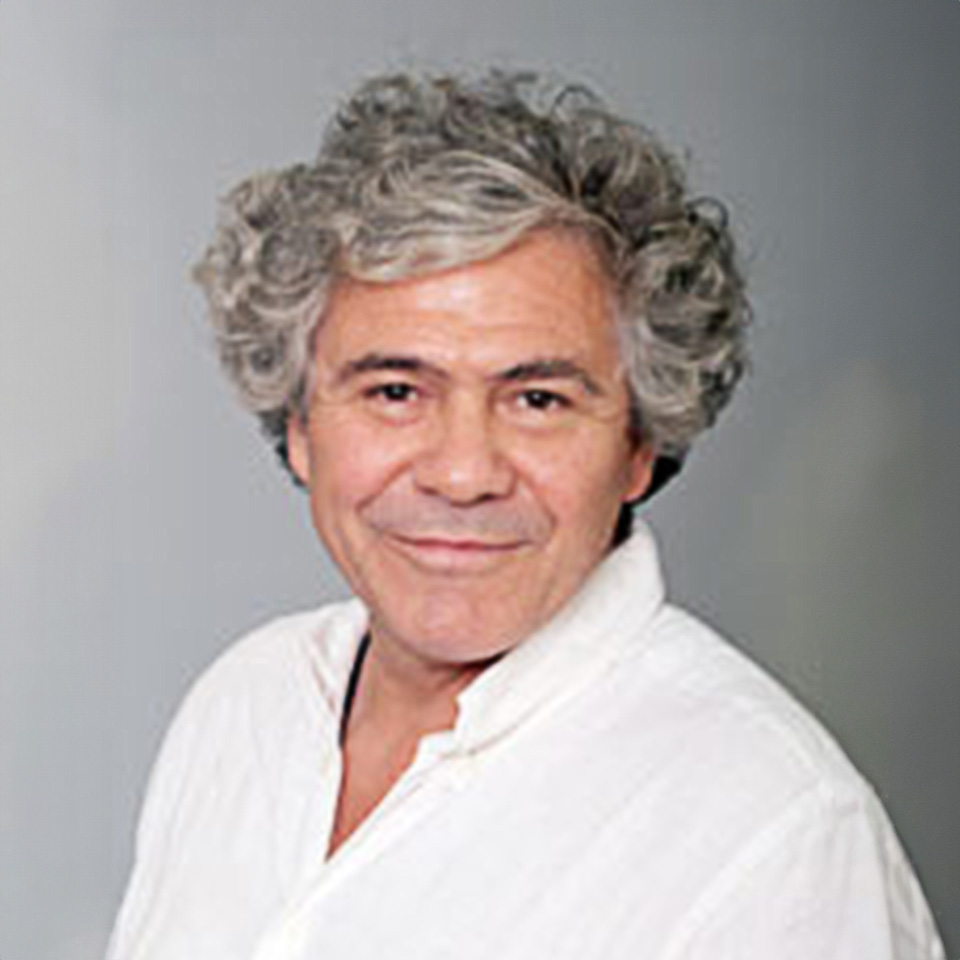
Artist: Emanuele De Reggi
Details: Bronze, 15′ tall. Cast in Thailand. Installed 2008.
Site: Main Street Library, 110 Main Street
Audio Tour
Hear Emanuele De Reggi tell you about the piece.
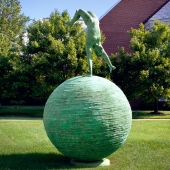
Transcription of Audio Tour:
My name is Emanuele De Reggi. I was born in 1957 in Florence, Italy, and this is the town that I grew up in and I did my major studies. Florence is a town in those days that had a lot of artisans.
At the moment, my sculpture activity is done in Italy, in Pietrasanta, where I have a house and a big studio, and Pietrasanta is this wonderful place that hosted artists from all over the world – sculptors – mostly because of the quarry of the white Carrara marble that are nearby. And a great number of bronze foundries.
Recently I have been going to Thailand to kind of experiment with their old technique of bronze casting. And this is when I ended up going with a big project. In 2007, Bobby Freeman commissioned Carambola for the Hilton Library in Newport News, Virginia. It is a twelve-foot sculpture that I created and cast in bronze in Bangkok.
Although “man on earth” is probably the first thing you see in Carambola, balance is really the essence of what the sculpture is about. The sphere represents an object in motion. The movement of a wheel is somehow predictable. A sphere can move 360 degrees and is the closest vision for me that can represent the experience of constant change in life. If you think about a great athlete, you know, a champion, or an incredible dancer like Nureyev? If you look at these people, they will tell you the same thing. If they don’t have enough concentration, they are not even able to master their body. The body is simply a consequence of the mind in every occasion. Therefore, the physical and the mental aspect is always connected. And they will always be. The fact of being ready is also an aspect of Carambola. Being ready for the fall and therefore, this moment of balance is at the end of the moment of awareness. That’s what it is.
